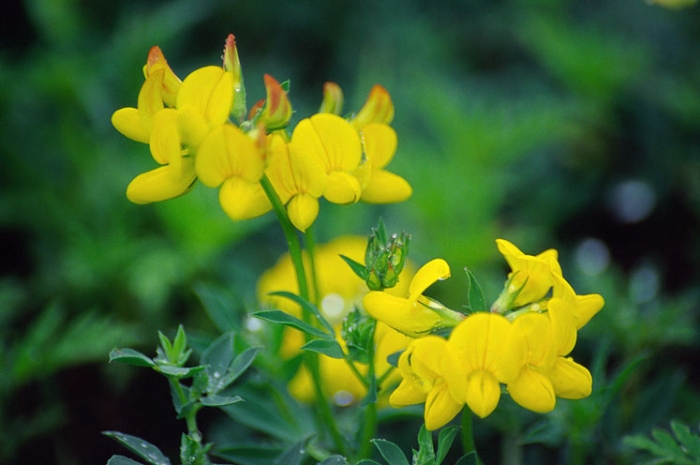Bird’s-Foot Trefoil
(Lotus corniculatus)
Bird’s-Foot Trefoil (Lotus corniculatus)
/
/

Dr. Nick V. Kurzenko
Public Domain
Image By:
Dr. Nick V. Kurzenko
Recorded By:
Copyright:
Public Domain
Copyright Notice:
Photo by: Dr. Nick V. Kurzenko | License Type: Public Domain | License URL: http://creativecommons.org/licenses/publicdomain/ | Attribution: 2004 Nick Kurzenko | Publisher: Calphotos |































































Estimated Native Range
Summary
Lotus corniculatus, commonly known as Bird’s-Foot Trefoil, is a deciduous perennial herb that thrives in a variety of habitats including grasslands, meadows, roadsides, and open woodlands across Europe, the Middle East, North Africa, West Asia, and Siberia. Its preferred environments are typically well-drained soils in sunny locations. The plant’s common name is derived from the characteristic shape of its seed pods, which resemble a bird’s foot. Bird’s-Foot Trefoil reaches variable heights of 5 to 20 centimeters (2 to 8 inches) and can extend up to 50 cm (20 in) long when supported by other plants. It has a distinctive leaf arrangement with five leaflets, where the central three are held conspicuously above the others, and it bears bright yellow, pea-like flowers that bloom from June to September, adding a splash of color to its surroundings.
Bird’s-Foot Trefoil is valued for its resilience to grazing, trampling, and mowing, making it an excellent choice for ground cover in urban landscapes, as well as for erosion control and green roofing. It is also used in wildflower meadows and as forage for livestock due to its high nutritional value. This plant is well-suited to a range of soil types and drainage conditions, and it prefers full sun but can tolerate partial shade. While generally low-maintenance, it can spread aggressively in some conditions and may require management to prevent unwanted spread.CC BY-SA 4.0
Bird’s-Foot Trefoil is valued for its resilience to grazing, trampling, and mowing, making it an excellent choice for ground cover in urban landscapes, as well as for erosion control and green roofing. It is also used in wildflower meadows and as forage for livestock due to its high nutritional value. This plant is well-suited to a range of soil types and drainage conditions, and it prefers full sun but can tolerate partial shade. While generally low-maintenance, it can spread aggressively in some conditions and may require management to prevent unwanted spread.CC BY-SA 4.0
Plant Description
- Plant Type: Herb
- Height: 0.3-0.4 feet
- Width: 1.5-2 feet
- Growth Rate: Moderate
- Flower Color: Yellow
- Flowering Season: Spring, Summer
- Leaf Retention: Deciduous
Growth Requirements
- Sun: Full Sun
- Water: Medium
- Drainage: Fast, Medium, Slow
Common Uses
Bee Garden, Butterfly Garden, Deer Resistant, Drought Tolerant, Erosion Control, Groundcover, Low Maintenance, Showy Flowers
Natural Habitat
Grasslands, meadows, roadsides, and open woodlands
Other Names
Common Names: Birdfoot Deervetch, Birdsfoot Trefoil, Eggs And Bacon, Bloomfell, Cat’s Clover, Crowtoes, Garden Bird’s-Foot-Trefoil, Garden Birdsfoot Trefoil, Ground Honeysuckle, Bird’s-Foot Deer-Vetch
Scientific Names: , Lotus corniculatus, Lotus corniculatus var. ciliatus, Lotus corniculatus subsp. minor, Lotus corniculatus var. crassifolia,
GBIF Accepted Name: Lotus corniculatus L.